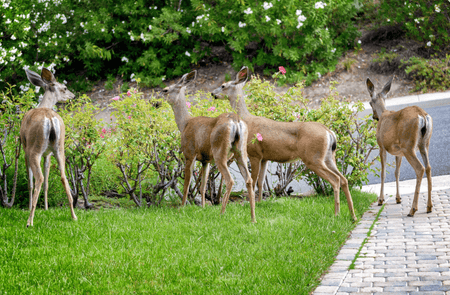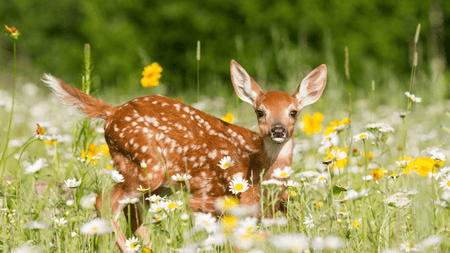Drought Defenders: Drought-Tolerant Native Plants To Attract Wildlife

What are drought-resistant native plants?

In the face of water scarcity, drought-resistant native plants offer a solution for sustainable home gardening. Adapted to local conditions, these plants require less water, lower maintenance efforts, and support biodiversity. Their deep roots improve soil health, and they contribute to a visually appealing garden that withstands changing climates. By choosing these native species, gardeners play a role in conserving water, reducing environmental impact, and creating your very own wildlife haven.
Meet the Drought Defenders native plant collection. Crafted for those residing in zip codes where water is a precious commodity, these hardy native perennials not only withstand drought conditions but also beckon a parade of pollinators throughout the summer and fall.
Popular with Pollinators
Despite the arid conditions, these plants remain a beacon for pollinators.
Drought resistant native plants can attract a variety of wildlife including birds, butterflies, moths, and even small mammals like rabbits and squirrels. These plants provide the wildlife with food and shelter, which supports the ecosystem and helps to control pests. For example, birds can help to control insects in the garden, while butterflies pollinate plants. Overall, drought resistant native plants play an important role in supporting biodiversity.
The Drought Defenders Trio
Meet the heart of this collection – three robust native plants that stand tall even in the face of water scarcity.
Zigzag Goldenrod (Solidago flexicaulis)
Zigzag Goldenrod is a versatile and visually appealing plant that is perfect for any drought-tolerant garden. Standing at 2-4 feet tall with graceful arching stems, it provides a pop of color from July to October, attracting bees, butterflies, and other pollinators.
Zigzag Goldenrod is also a beneficial plant for the garden ecosystem, as it helps to improve soil quality and suppress weeds. It is also relatively low-maintenance, requiring minimal watering and fertilization.
To incorporate Zigzag Goldenrod into your garden design, place it towards the middle or back of your garden bed to create a dynamic backdrop. Its arching stems will add depth and height to the landscape.
Slender Mountain Mint (Pycnanthemum tenuifolium)

Slender Mountain Mint is a breath of fresh air, another excellent choice for a drought-tolerant home garden. Standing at 2-4 feet tall, it releases a refreshing minty fragrance from June to September. Its blooms attract bees, butterflies, and other pollinators, making it an important part of any garden that supports biodiversity.
Slender Mountain Mint is also a low-maintenance plant that requires minimal watering and fertilization. It is also deer-resistant, making it a good choice for gardeners who have problems with deer browsing on their plants.
To plant Slender Mountain Mint in your garden, choose a location in full sun to partial shade. It can be planted in the ground or in containers. If planting in the ground, space plants 18-24 inches apart.
Woodland Sunflower (Helianthus divaricatus)

Woodland Sunflower is a warm and cheerful addition to any drought-tolerant garden. Reaching heights of 2-6 feet, it produces bright yellow blooms from June to September. Woodland Sunflower is a popular food source for bees, birds, butterflies, and caterpillars, making it a valuable asset to any garden that supports wildlife.
Woodland Sunflower is also a relatively low-maintenance plant. It prefers full sun to partial shade and well-drained soil. It is also deer-resistant.
To incorporate into your garden, choose a location in full sun to partial shade. Space plants 24-36 inches apart.
With a little care and attention, your drought-tolerant native plants will thrive and provide you with years of enjoyment.
Drought-Tolerant Native Plant Benefits
Benefits of planting drought-tolerant native plants in your home garden:
- Conserve water: Drought-tolerant native plants require less water than traditional garden plants, which can help you to save money on your water bill and reduce your environmental impact.
- Support wildlife: Drought-tolerant native plants provide food and shelter for a variety of wildlife, including bees,butterflies, birds, and other beneficial insects.
- Reduce maintenance: Drought-tolerant native plants are generally low-maintenance and require less fertilizer and pesticides than traditional garden plants.
- Improve soil health: Drought-tolerant native plants have deep roots that help to improve soil drainage and aeration.They also help to suppress weeds and prevent erosion.
- Add beauty to your garden: Drought-tolerant native plants come in a variety of shapes, sizes, and colors, so you can find the perfect plants to complement your garden design.
Choosing what goes into your garden impacts our planet. If you are looking for a way to create a beautiful and sustainable garden that will also support local wildlife, drought-tolerant native plants are the perfect choice. Living in an area of water scarcity, it’s also important to share what you’ve learned with your neighbors, who are certainly dealing with the same issue. We can create wildlife corridors while also conserving precious water. Our impact is greater when we work together.

Find Native Plants by Zip Code
We took the guesswork out of planting native. Check your zip to see what ships!


















